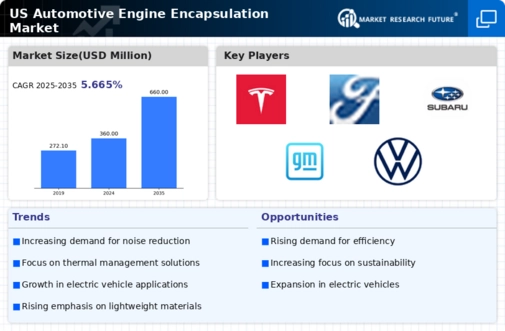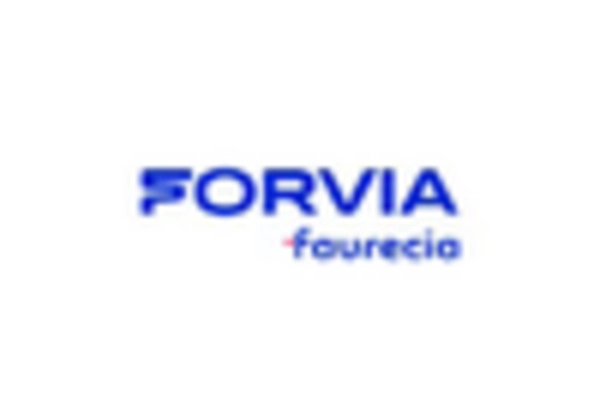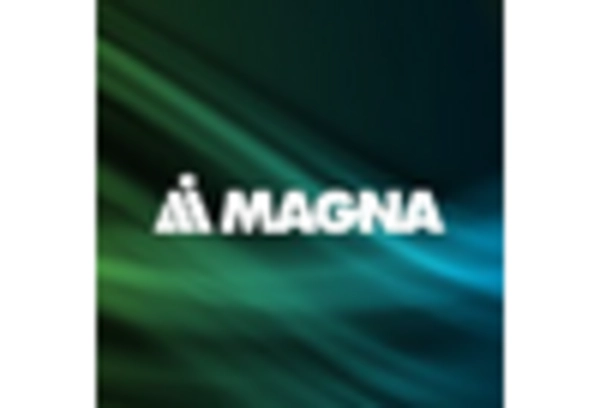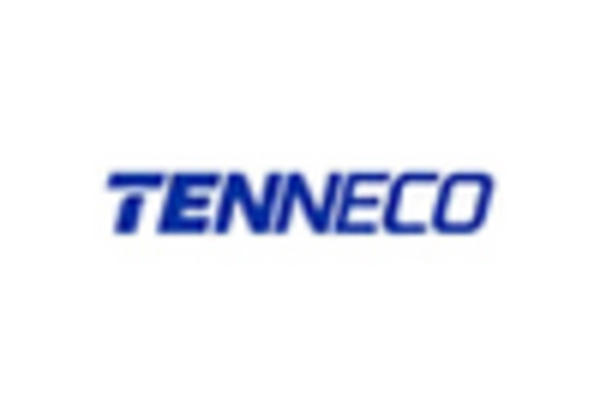Rising Demand for Fuel Efficiency
The automotive engine-encapsulation market experiences a notable surge in demand driven by the increasing consumer preference for fuel-efficient vehicles. As fuel prices fluctuate, consumers are more inclined to invest in vehicles that promise better mileage. This trend is further supported by manufacturers striving to meet stringent fuel economy standards set by regulatory bodies. In 2025, the average fuel economy of new light-duty vehicles in the US is projected to reach approximately 25 mpg, necessitating advanced engine encapsulation solutions to optimize thermal management and reduce energy loss. Consequently, the automotive engine-encapsulation market is likely to expand as manufacturers seek innovative materials and designs to enhance engine performance while adhering to these efficiency standards.
Technological Innovations in Materials
The automotive engine-encapsulation market is significantly influenced by advancements in material science. Innovations such as lightweight composites and advanced polymers are becoming increasingly prevalent in engine encapsulation applications. These materials not only contribute to weight reduction but also enhance thermal insulation and noise reduction capabilities. For instance, the use of thermoplastic elastomers in encapsulation can improve durability and resistance to high temperatures, which is crucial for modern engines. As manufacturers continue to explore these technological innovations, the market is expected to witness a shift towards more efficient and sustainable encapsulation solutions, potentially increasing market value by an estimated 15% over the next five years.
Regulatory Pressures for Emission Reductions
The automotive engine-encapsulation market is also shaped by stringent regulatory pressures aimed at reducing vehicle emissions. In the US, the Environmental Protection Agency (EPA) has implemented increasingly rigorous standards for greenhouse gas emissions, compelling manufacturers to adopt technologies that minimize environmental impact. Engine encapsulation serves as a critical component in achieving these emission targets by improving thermal efficiency and reducing engine operating temperatures. As a result, the market is expected to grow as manufacturers invest in encapsulation solutions that not only comply with regulations but also enhance overall vehicle performance. Projections indicate that the market could expand by 20% in response to these regulatory demands over the next few years.
Growth of Electric and Hybrid Vehicle Segments
The automotive engine-encapsulation market is witnessing a transformation due to the rapid growth of electric and hybrid vehicle segments. As these vehicles become more prevalent, the need for effective thermal management solutions becomes paramount. Engine encapsulation technologies are being adapted to cater to the unique requirements of electric powertrains, which often generate different thermal profiles compared to traditional internal combustion engines. This shift is likely to create new opportunities within the market, as manufacturers develop encapsulation solutions that enhance the efficiency and performance of electric and hybrid vehicles. By 2025, it is estimated that electric and hybrid vehicles will account for over 30% of new vehicle sales in the US, further driving demand for innovative encapsulation technologies.
Increased Focus on Noise, Vibration, and Harshness (NVH) Reduction
The automotive engine-encapsulation market is increasingly driven by the need to address noise, vibration, and harshness (NVH) issues in vehicles. Consumers are becoming more discerning regarding the acoustic comfort of their vehicles, prompting manufacturers to invest in solutions that minimize engine noise. Engine encapsulation plays a pivotal role in this regard, as it can significantly dampen sound transmission and vibrations. In 2025, it is anticipated that nearly 60% of new vehicles will incorporate advanced encapsulation technologies aimed at enhancing NVH performance. This growing emphasis on passenger comfort is likely to propel the automotive engine-encapsulation market, as manufacturers seek to differentiate their offerings in a competitive landscape.

















Leave a Comment